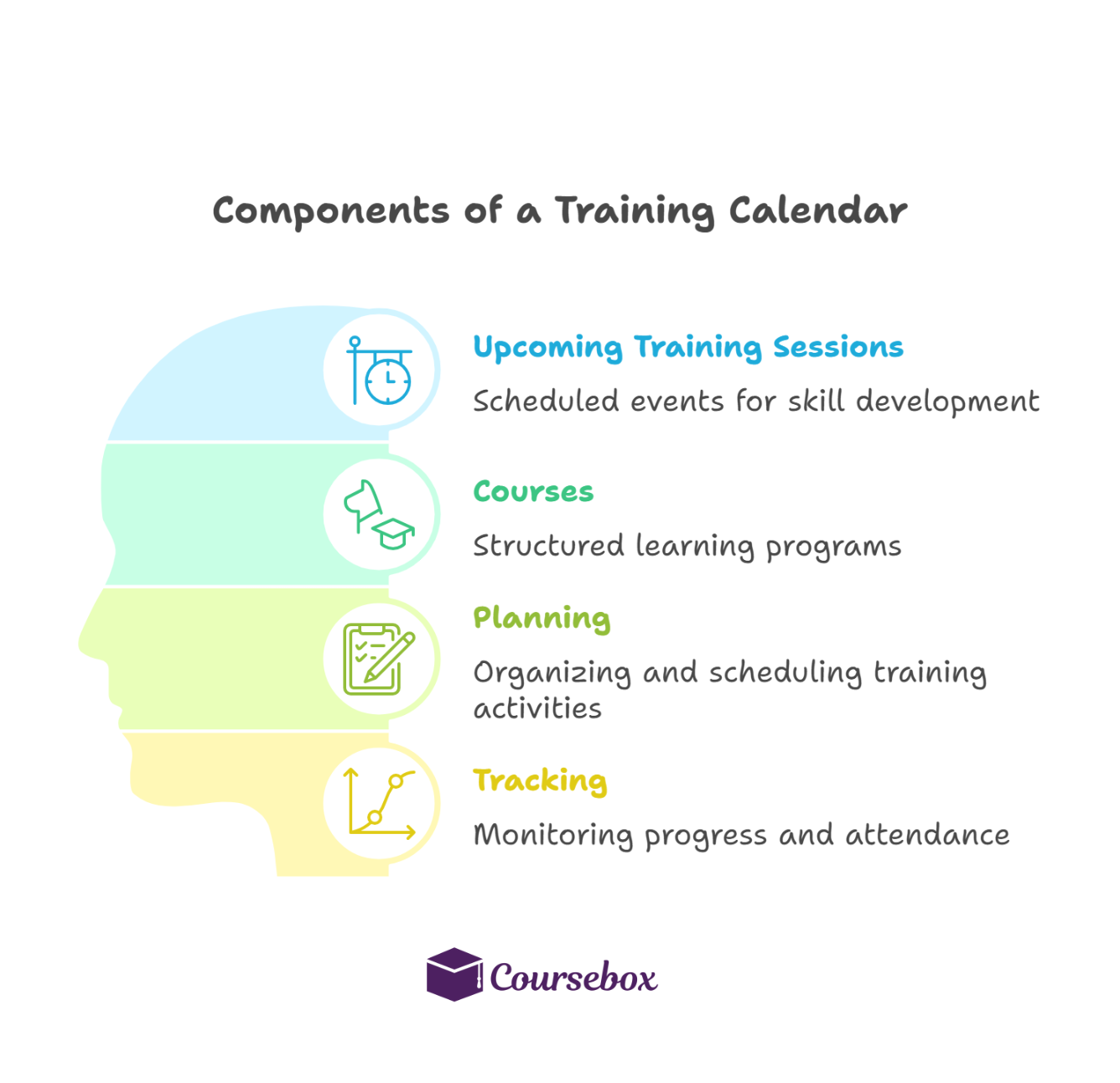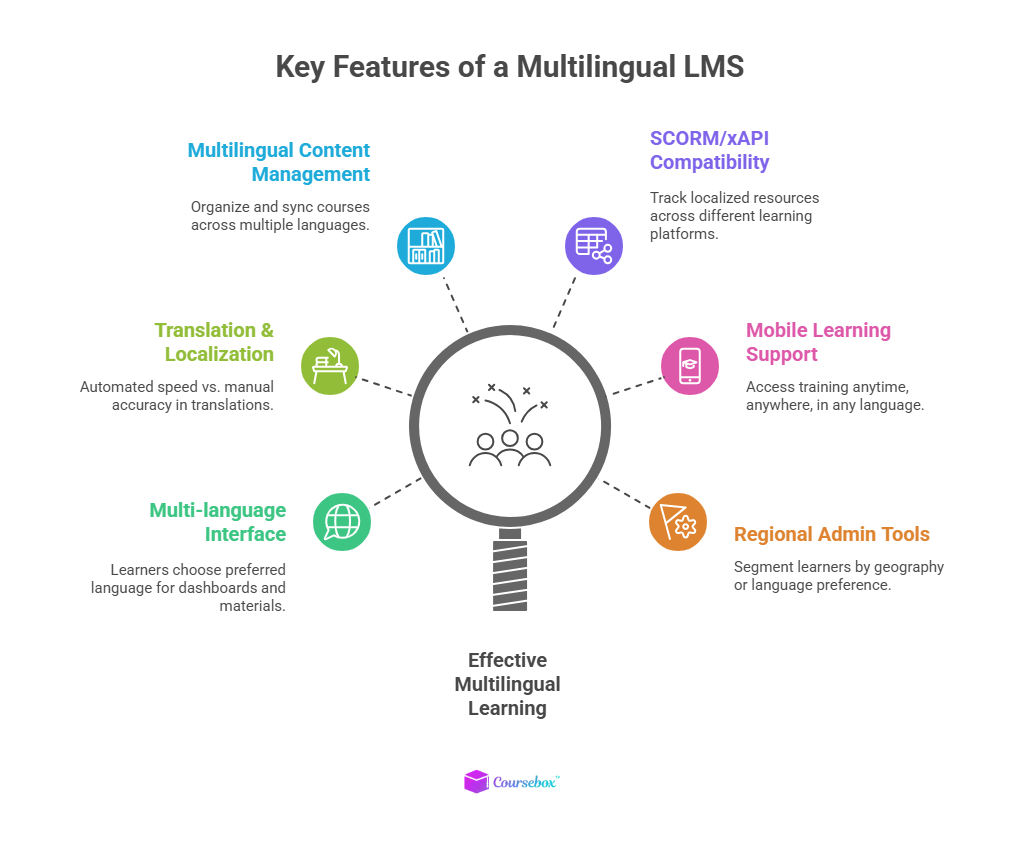Training Calendar Format Types Explained (FREE Excel Template)
Discover the best training calendar format to track employee training with ease. Customize your schedule and get your free Excel template now.
Discover the best training calendar format to track employee training with ease. Customize your schedule and get your free Excel template now.
.webp)
Keeping training programs organized can be a challenging task. Without a clear plan, sessions risk becoming disjointed, attendance drops, and learning outcomes suffer. A training calendar provides structure, helps track progress, and keeps employees engaged and accountable.
This guide explains what a training calendar is, helps you choose a suitable training calendar format, and shows how to plan training sessions effectively. You’ll also get a free Excel template to start scheduling and managing your employee development programs right away.

A training calendar is a visual schedule of workshops, online courses, and learning sessions designed to support employee growth and skill development. It helps employees see upcoming opportunities, stay on track, and plan their learning effectively.
Offering a variety of training sessions empowers employees to strengthen existing skills while gaining new ones. This builds confidence, independence, and overall performance.
Without a structured plan, training initiatives can become inconsistent or ineffective. A well-organized training calendar ensures learning programs run smoothly and deliver meaningful results for both employees and the business.

A well-structured training calendar offers far more than a list of workshops or courses. It organizes learning, aligns training sessions with business goals, and demonstrates your commitment to employee development. Proper planning makes training more effective, helps track progress, and ensures employees get the right learning at the right time.
Key benefits include:
Employees gain skills and confidence when they know what training is coming. Being prepared increases engagement and helps them apply new knowledge effectively.
A visible training schedule signals that exploring new ideas and approaches is valued. Employees feel empowered to think creatively and suggest improvements.
Companies investing in employee training gain a competitive edge. A clear training calendar shows potential and current employees that your business prioritizes development and growth.
A consistent schedule emphasizes that learning is ongoing, making professional development part of everyday work life.
Strategically planned training helps fill gaps, boosts morale, and enhances overall employee performance.
Training calendars simplify planning, resource allocation, and budget management. HR can map learning needs, balance training distribution, and track participation, satisfaction, and performance improvements effectively.

Training calendars can take several forms depending on the team size, frequency of sessions, and type of training. Choosing the right format ensures your schedule is easy to follow, resources are allocated efficiently, and employees stay engaged. Common training calendar formats include:
A straightforward list of dates and sessions. Best for small to medium teams with minimal training complexity. Easy to create and maintain.
Breaks training into daily or weekly modules, often with multiple tracks. Ideal for large teams or intensive programs. Offers high customization for different roles or skill levels.
Organizes sessions by month, highlighting key milestones and deadlines. Suitable for medium to large teams and long-term programs.
Provides a high-level view of training across the entire year. Works for all team sizes and strategic planning, though less detailed.
Focuses on interconnected training tasks or project-specific learning. Great for medium to large teams working on complex initiatives.
Selecting a training calendar format depends on several factors:
Larger teams may need more detailed calendars with multiple tracks to avoid conflicts.
Daily or weekly sessions require granular formats, while monthly or annual programs can use broader overviews.
Templates should align with goals, whether tracking topics, outcomes, or session details.
Onboarding, skill development, compliance, or leadership programs may need different formats.
Flexible templates allow for branding, notes, or additional session details.
Choose a format that works with your project management or HR software for seamless scheduling.

A well-structured training calendar keeps your employee development programs organized, ensures learning objectives are met, and makes the process easier to manage for both HR and L&D teams. Follow these steps to create a training calendar:
Before building your calendar, understand your organization’s current state and skill gaps. Ask questions like:
Tools like Coursebox AI can simplify this analysis by tracking employee performance, identifying gaps, and providing detailed insights. This helps you design targeted training programs that align with business needs.

Not all employees need the same training. Segment staff by department, role, experience level, or career goals. Proper segmentation allows you to personalize training, making it more relevant and effective. With modern tools, you can categorize employees and deliver customized learning paths directly to their devices.
Pro tip: Consider creating learner personas for the best results.

Every session should have measurable goals, such as:
Align these objectives with your employees’ professional development. Multilingual LMSs can help you translate goals into actionable learning programs, with suggested courses and paths for skill development.

Determine when and where each training session will take place. Consider:
Select teaching methods that maximize engagement. Options include:
Combining multiple approaches helps cater to different learning styles, ensuring employees retain knowledge effectively.

Track the success of your training calendar with methods like:
A well-organized training calendar makes planning, tracking, and analyzing your employee development programs much easier. Using a pre-made Excel training calendar template is a smart way to save time and ensure consistency.
Here’s how to make the most of it:

If needed, link your calendar with project management software or LMS platforms to keep training aligned with company workflows.
Distribute the calendar via PDF, OneDrive, Google Drive, or other cloud-based platforms for real-time collaboration.
Keep your calendar current by adjusting dates, marking completed sessions, and adding new trainings as your program evolves.

Stay organized and manage your team’s development with this simple, customizable Excel template. Use it to plan, record, and monitor all your training sessions in one easy-to-edit spreadsheet. You can enter dates, topics, trainers, departments, and any notes or instructions, and update them as your schedule evolves.
Download your Excel template and start organizing your training programs today!

A well-organized training calendar is the foundation of effective employee development. By planning sessions, tracking progress, and managing resources efficiently, you ensure your team stays engaged, productive, and continuously growing.
With Coursebox AI, you can take your training to the next level. Automate scheduling, track participation, and generate actionable insights, all from a single platform. Whether you’re managing onboarding, compliance, or skill-building programs, Coursebox AI simplifies the process so your L&D team can focus on delivering meaningful learning experiences.
To structure a training schedule, list all training sessions, set clear dates and times, and organize topics from basic to advanced. Include trainers, locations, and any materials needed. Using a training calendar helps you track progress and ensures consistent learning across your team.
Formatting a training program means creating a clear plan for each session. Include session title, objectives, date, time, trainer, and resources. Use color-coding or simple tables in Excel to make the schedule easy to read and follow.
To build a training schedule in Excel, create columns for date, session, trainer, location, and duration. Use drop-down lists, formulas, and conditional formatting to track sessions and progress. Start with a training calendar template to save time and keep your schedule organized.
Get started for free today.
